Sparse Index
A sparse index has one (key, pointer) per each block
- so it uses less space than Dense Index
- but requires more time to find a record

- not all keys are referenced by this index
- pointers point only to the 1st key of the block
- cannot say from index if a key is present or not, always need to follow a pointer, load the block and check the key there
Nested Levels
Key benefit of this
- we can build the 2nd index on top of index
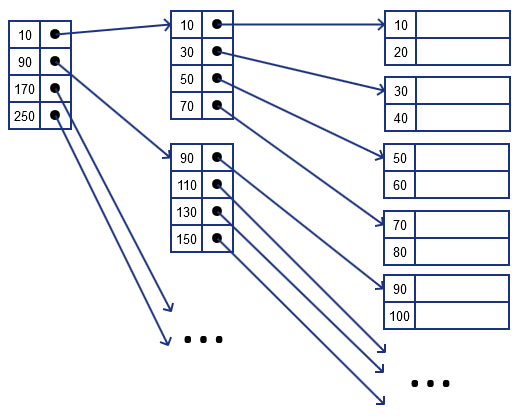
Operations
Lookup
Rule to retrieve record with specified $k$
- we find such $k$ in index that
- is greater or equal to $k$,
- but less than consequent one

- suppose we want to find a record with $k = 20$
- $10 \leqslant k = 20 < 90$, follow 10
- $10 \leqslant k = 20 < 30$, follow 10
- load (10, 20) block
- if we looked for $k = 15$
- we also would follow 10, and 10, then read the block and discover it’s not there
Deletion

suppose we want to delete $k = 40$
- we locate the record, remove it and leave a tombstone there
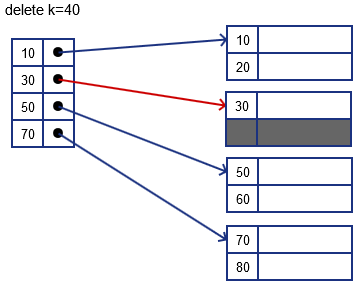
if we want to delete $k = 30$
- locate the record, delete it and leave a tombstone there
- but we want to keep it sequential and continuous: so we move 40 up
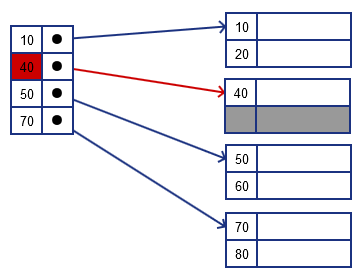
- also note that we need to update the index as well: not it needs to point to 40 instead of 30
what if we want to delete both $k = 30$ and $k = 40$?
- locate the records and delete both
- the whole block is no longer needed - we remove the pointers to it along with corresponding index record
- so we remove 30 from the index and move 50 and 70 up
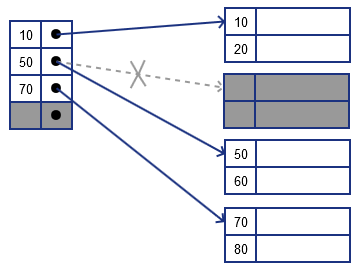
Insertion

insert key 34
- we first locate where we insert
- lucky case: some room in the block, just add the record there
insert key 15
- this time no room in the block where we want to insert it
- there are two options
- Immediate Reorganization
- Overflow Blocks
’'’Immediate Reorganization’’’
- re-distribution data
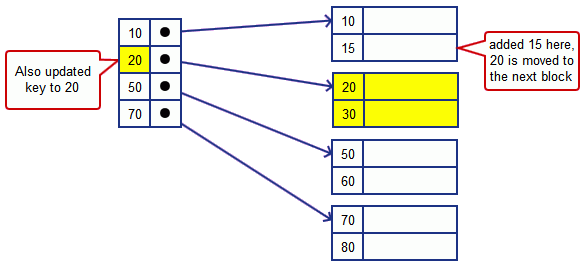
- we try to push the data down
- in this case 20 is moved to the next block
- note that we also have to update the index key that points to the second block since its first key got updated
- worst case: we will move all the data blocks
- variant: insert a new block and update the index
’'’Overflow Blocks’’’
- we create a new block and create a pointer to it from
- it will be reorganized later
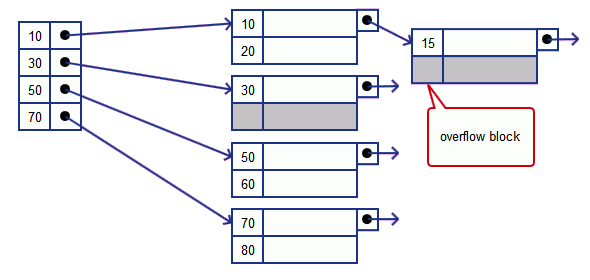
- it may degenerate to a linked list
- may have to traverse the whole chain only to find out that the value is not there
- i.e. back to linear search
Duplicate Keys
Suppose we have duplicate keys in our database. How to build index?
Option 1
There could be some problems we build it same way as without assuming duplicate keys
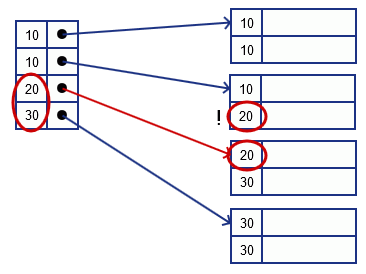
-
careful with looking for 20 or 30 - if we follow the pointer for 20, we’ll loose the previous record for 20 - so in this case will need to also load the previous block to check if it contains something
Option 2
We may point to previous values, so we know the range
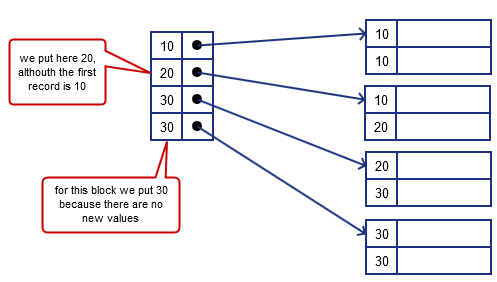
- so in the index we indicate the ‘‘first new’’ (not seen previously) key from block